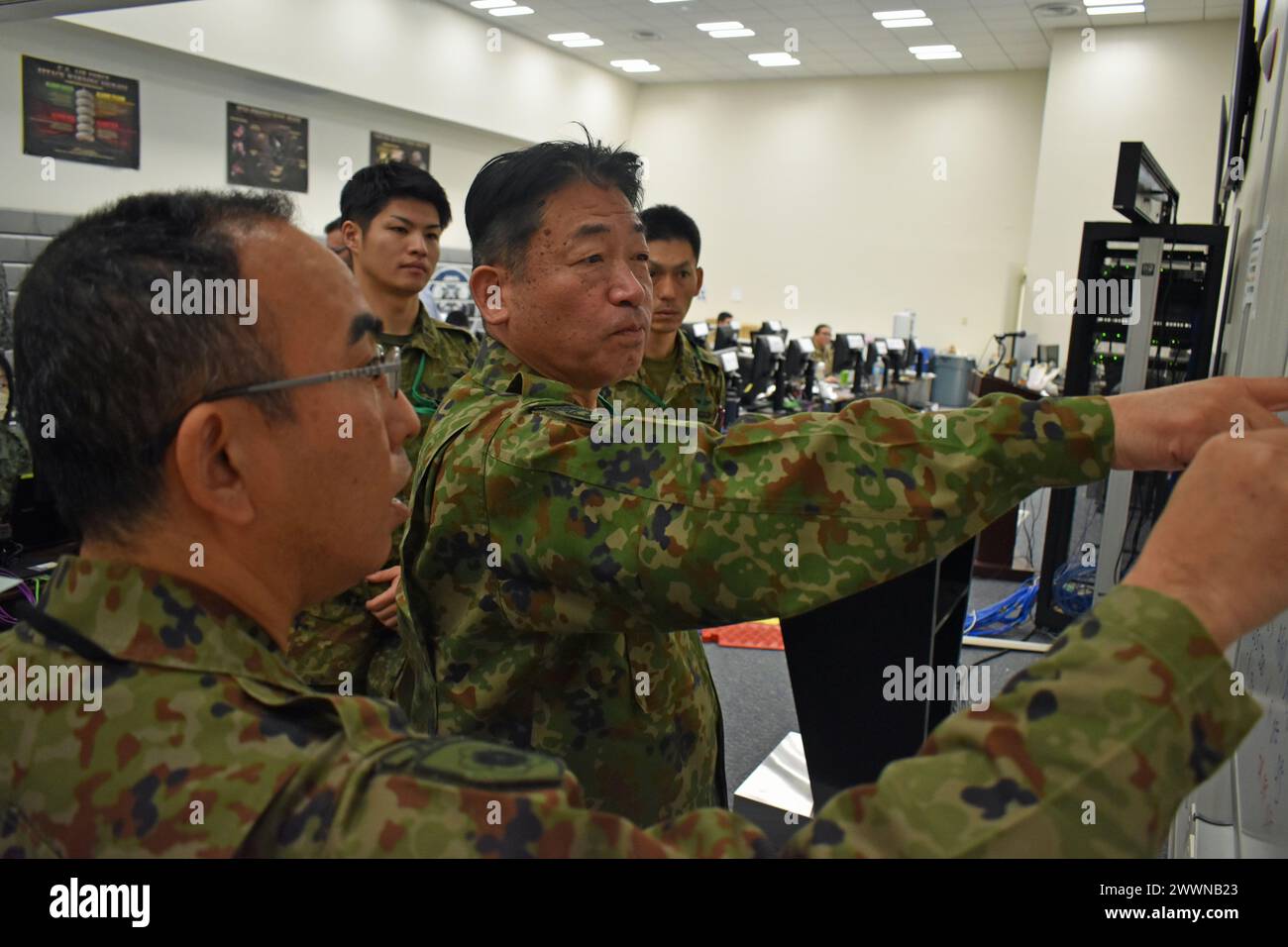Lt. Gen. TAKEMOTO Ryoji, commanding general of the Ground Component Command, Japan Ground Self-Defense Force, visits the Bilateral Joint Operations Coordination Center during Exercise Keen Edge 24 on Yokota Air Base, Japan, Feb. 4, 2024. TAKEMOTO met with BJOCC personnel from Japan, the U.S. and Australia and received an update brief about the exercise’s progress. Keen Edge allows the U.S. and Japan to practice coordination procedures and improve interoperability to effectively respond to any regional contingency or humanitarian crisis. Historically a bilateral Japan Joint Staff and U.S. Indo-

Image details
Contributor:
Operation 2024 / Alamy Stock PhotoImage ID:
2WWNB23File size:
68.7 MB (1.5 MB Compressed download)Releases:
Model - no | Property - noDo I need a release?Dimensions:
6000 x 4000 px | 50.8 x 33.9 cm | 20 x 13.3 inches | 300dpiDate taken:
4 February 2024More information:
This image could have imperfections as it’s either historical or reportage.
Lt. Gen. TAKEMOTO Ryoji, commanding general of the Ground Component Command, Japan Ground Self-Defense Force, visits the Bilateral Joint Operations Coordination Center during Exercise Keen Edge 24 on Yokota Air Base, Japan, Feb. 4, 2024. TAKEMOTO met with BJOCC personnel from Japan, the U.S. and Australia and received an update brief about the exercise’s progress. Keen Edge allows the U.S. and Japan to practice coordination procedures and improve interoperability to effectively respond to any regional contingency or humanitarian crisis. Historically a bilateral Japan Joint Staff and U.S. Indo-Pacific Command exercise, this iteration includes the participation of Australia for the first time, further highlighting the multinational commitment to a free and open Indo-Pacific region.